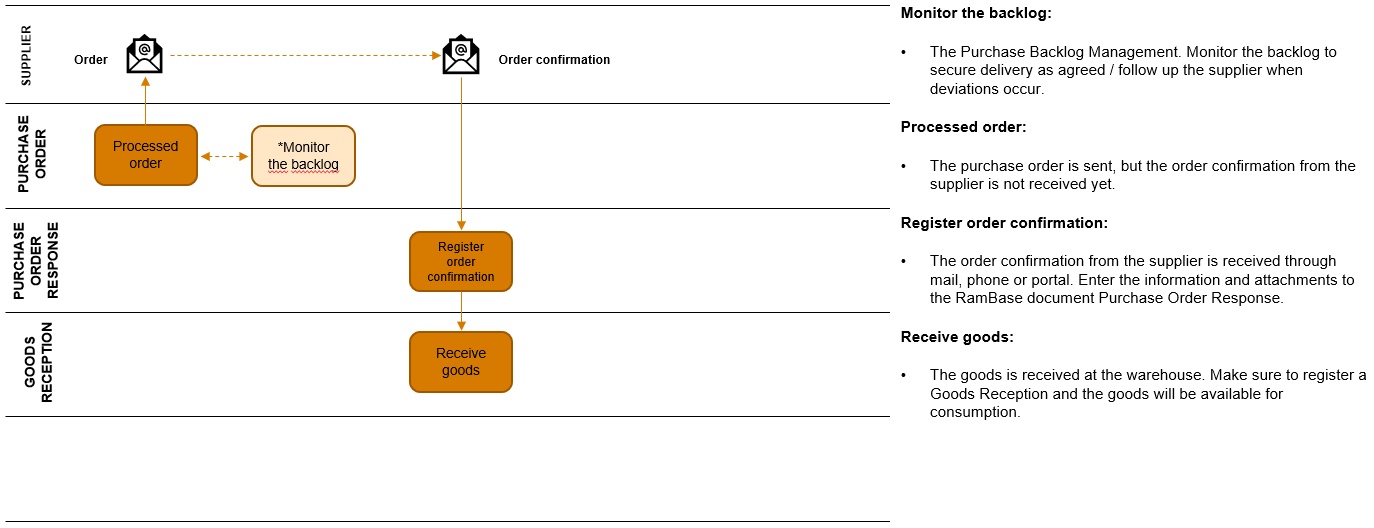Order handling

An order handling process may be defined as the process where one confirms, -not negotiate, price, delivery time, payment terms, articles and quantity.
Output from the order process
Single purchase with confirmed terms.
Contractual purchase.
Canceled purchase with pre-confirmed terms.
Following up on confirmed, not delivered orders.
An order process which originates from a quoting process mainly contains agreed terms. The terms have been discussed and the parties have agreed upon the terms set. An order process, which requires an order confirmation, can be said to be legally binding. It is at this point you may include the order in the company's financial records for expected future costs.
An order process may also start without originating from a quoting process. This may be due to the order being small, or the selling part has an agreement of terms to be set on all transactions, such as purchases from a web shop. These agreements may be written or oral, with terms such as delivery time and price agreed upon and implemented in all transactions. Contractual terms are often required by purchasers representing big companies.
In addition to the several other tasks in the order process, it is important to mention the tasks where you should follow up the acknowledged, but not delivered orders. You are handling the supplier backlog, which could be defined as what the suppliers owe the purchasers company. Within this task you could follow up the supplier backlog based on requests or in internal routines. For instance, getting confirmed dates from supplier/production, control that orders are delivered according to confirmed date or attempt to expedite purchase orders/productions if customers requested date is not fulfilled.
Good internal routines for following up the supplier backlog is vital. If the suppliers seldom deliver in time, the company the purchaser represents will not be able to deliver on time. This may be rectified by closely following up the backlog to avoid discrepancies.
A supplier order may, as all other processes, be canceled until a certain threshold has been reached.
Tasks involved in this process
Send the purchase order
Send the purchase order to one or several recipients by mail or print.
Allocating goods
Ensuring that the allocation to customer or production work orders is optimal according to when the goods are required.
Follow up on the supplier backlog
Even if the order is already acknowledged it may not be delivered in time and must be chased.
Change an order
After request and agreement with the supplier, create a new version of the purchase order.